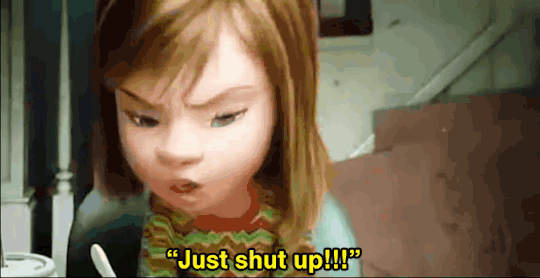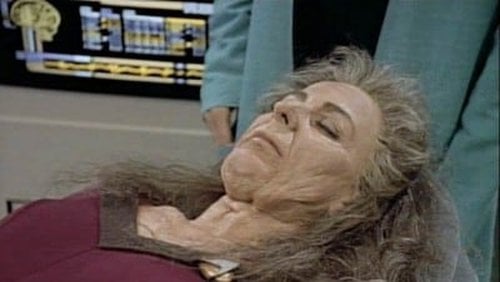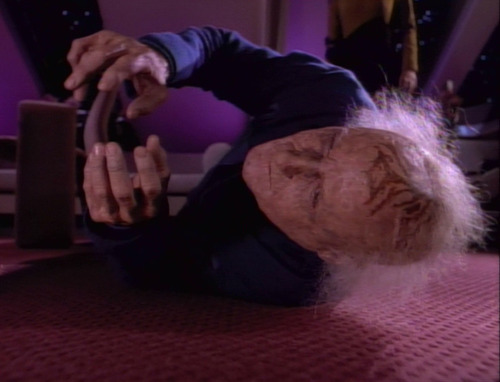In this week’s module, the film Inside Out and The Star Trek episode “Man of the People”, touched upon the intersection of our cognitive system with our emotions and how they function. I think the film did a nice job showing how our emotions can fluctuate due to our surroundings and how we are interacting with it. When Riley moves to a new home, we can tell that she seems to be in a nostalgic state or mood, but she experiences a variety of emotions on top of that. This relates back to our lecture where it discussed that moods are “modulated and sustained background feeling”, while emotions are “self organizing patterns of the organism, the collection of responses, many of which are publicly observable”. When they first enter the new home you can tell that Riley is not impressed by their condition and misses her old home already, but after Joy plants an idea in Riley’s mind to play mini sticks (10:50), we see that she is happy. Riley is seen laughing with her parents, a physical display of the emotion she is feeling. Her nostalgic mood for her home did not disappear, it’s still there, just hidden below the current emotion she is feeling.

We see this again when Riley is at the dinner table with her parents and she gives them attitude after they bring up hockey (27:30), which causes Riley’s Dad to scold her. Riley eventually yells at her father to “shut up”, her anger clearly on display. This emotion is a reaction to the conversation between herself and her father, but her underlying longing for home is at the bottom of it.
For me, I felt like the film represented emotions as something that we first construct at birth, but then afterwards it is something that happens to us (post us creating them) which I think is interesting that it can be both in a way. When Riley is born and she first sees her parents (1:34), Joy is sprung into existence in Riley’s mind. This shows how Riley herself constructed Joy based on what she was feeling and seeing in that moment even though she was just a baby. We see that as things begin to happen Riley constructed all the emotions into existence, Sadness arriving second.

We see how emotions are represented to be the “masterminds” of the brain as they are located in Headquarters, which is far away from the other areas such as long term memory, imagination land, and the dreamland. The emotions in headquarters have access to a large console where there are buttons and levers that trigger something in Riley’s mind to then act a certain way physically with her body. When Riley stands up to introduce herself in front of the class, Sadness touches one of the “joy” memory balls and turns it blue. Now that that memory has a new emotion attached to it, Riley begins crying and having a physical reaction. We see this again when Riley is playing hockey and Anger fully sends one of the levers and Riley throws her hockey stick before stomping off the ice. But this made me think back to the lecture where it discusses that one of the tenets of the Theory of Emotional Construction states that “Emotions are not something that happens to us, they are something we do”. So, this made me think about how the act of throwing her hockey stick is anger itself, and that’s how she was expressing it, not that anger “told” her to throw the stick as represented in the film with the console that was controlling Riley.
In the episode of Star Trek, I thought they had a really cool way of representing negative emotions, and how it can take a physical toll on your body, showing how our emotions, mind, and body are so closely intertwined. Also, it touched base with how our own emotions can sometimes have an affect on how we perceive and interact with others. When Ambassador Alkar reveals what he did to Captain Picard (33:14), he justifies his actions by saying “If I came to these peace talks hindered by unwanted emotions, then Rekags and Seronians would be condemned to go on fighting.”.

He is worried about his own emotions becoming obstacles in trying to create peace between two sides who have their own negative feelings towards each other. In other words, the emotions have the capability to control your mind to an extent, because they can be so strong, and the power may be unconscious. This goes back to how in the film, the emotions Joy, Sadness, Anger, Disgust, and Fear were located in the Headquarters with the brain with access to a console. Earlier in this scene though, Alkar says “I discovered long ago I had the ability to channel my darker thoughts”, which then leads to the idea that Alkar is so hyper aware of his emotions that he can separate them from his mind, even though they are actually heavily connected as the mind functions in unison with emotions.

In a later scene when we see Deanna on the table, Captain Picard and his crew are trying to figure out what is wrong with her (36:20). They note that “If Alkwar is flooding her with all this psychic waste, that would explain the high level of neurotransmitters, all these negative emotions pouring into her, they have caused a chemical response in her brain”. We see throughout the episode that Deanna’s body is aging at an exponential rate, and her demeanor is becoming more aggressive. There seems to be a correlation between negative emotions and physical health, and how what we are feeling can ultimately take a toll on your body. Also, Alkar dies at the end of the episode because all of the negative emotions he had pushed onto Deanna went back to him and he looks like an old man. This made me think about how some people die of a broken heart. Their sadness and grief surrounding a loss actually cause their body to not function as it is supposed to. First the emotions affect the brain, the person becomes numb to their surroundings and eventually the body seems to follow.
3 thoughts on “Emotions Taking the Wheel”
Hey Sara,
I really like your title of your blog; it would be something I would think of. But all in the part where you wrote about riley throwing her hockey stick and it’s not anger that told her to do so, it was how she was expressing it. I really like your input on that. Because technically angry emotion made her go all out, but I thought with attitude not with actions. So that would make sense that it was her adding to that emotion. Also, your explanation of Deanna becoming like an old man and made you think of people dying from a broken heart. Was very interesting idea how it first affects the brain, then they become numb to their surroundings and eventually the body follows. It’s crazy to think that we can die of a broken heart and that is basically our body’s way of shutting down. I didn’t really see that, but you made an excellent point.
gcoito
Hi Sarah,
Great job of analyzing the texts for this week! I really like your discussion of the difference between Riley’s mood and the individual emotions that we perceive in her. Unlike what we see in the film, our emotions don’t have a simple off/on switch, and they can linger, overlapping each other (we see some of this toward the end of the film where the core memory balls are no longer a solid color but contain a number of different colors/emotions).
You also have to make a great point about how we have to learn emotions. “Joy” is a concept that we use to make sense of a range of bodily sensations within a specific context. Once Riley has a concept for Joy or Sadness or Anger or Fear or Disgust (and all the other emotions), she uses those concepts to make sense of what she is feeling in a given context.
I also love your discussion about how Riley is not throwing down the hockey stick because she is anger, rather that her throwing down the hockey stick is her anger. And as you suggest, this seems to contradict the “mastermind” aspect of the film. She throws down the stick because anger hits a lever, “triggering” that response. In fact, the “mastermind” element of the film suggest that we are at the mercy of our emotions—that they control us—rather than that we construct them.
Jessica Hautsch
Hey Sarah! I think you’re absolutely right about how the film shows the juxtaposition between emotion and mood. Even though Riley was briefly happy while playing mini sticks with her parents, she was still feeling sad and had a melancholic mood. Emotion is more temporary while mood is more long-term.
It’s interesting how you saw Riley as a baby constructing Joy, Sadness, etc. I thought they just kind of popped up and I didn’t think about it much, but I think the way you saw it is correct. Really cool thought actually.
Now that you brought up how the emotions are in headquarters far away from everything else, additionally having access to trigger buttons, I’m thinking it helps display that emotion/mood juxtaposition earlier. Emotions are quick and spring up, thus they have the trigger buttons.
It was wild to see the aging effects of negative emotion in Star Trek. Dr. Crusher called Deanna’s situation psychic waste, but I feel as if it should’ve been called psychic attacks as it was so mentally and physically draining to Deanna. The body and mind truly are interconnected. I’m so glad you brought up the dying of a broken heart fact because 1) I forgot about it lol and 2) it’s important. We see this interconnectedness with other things too, like how stress can cause hair to fall out or kidney pain.
Sara Giarnieri